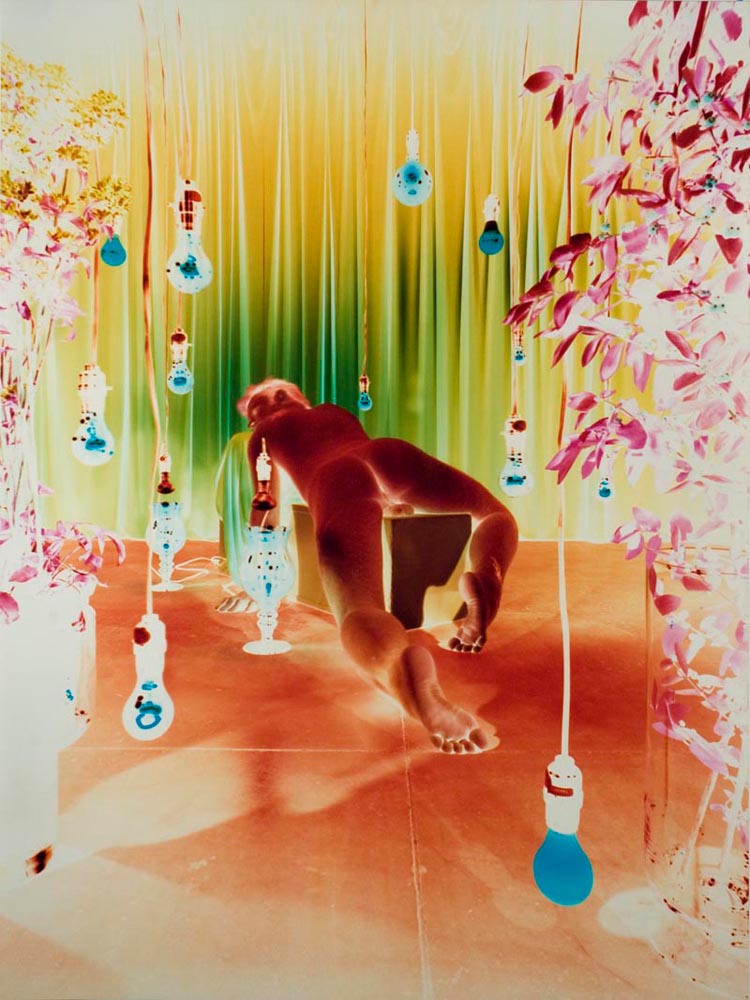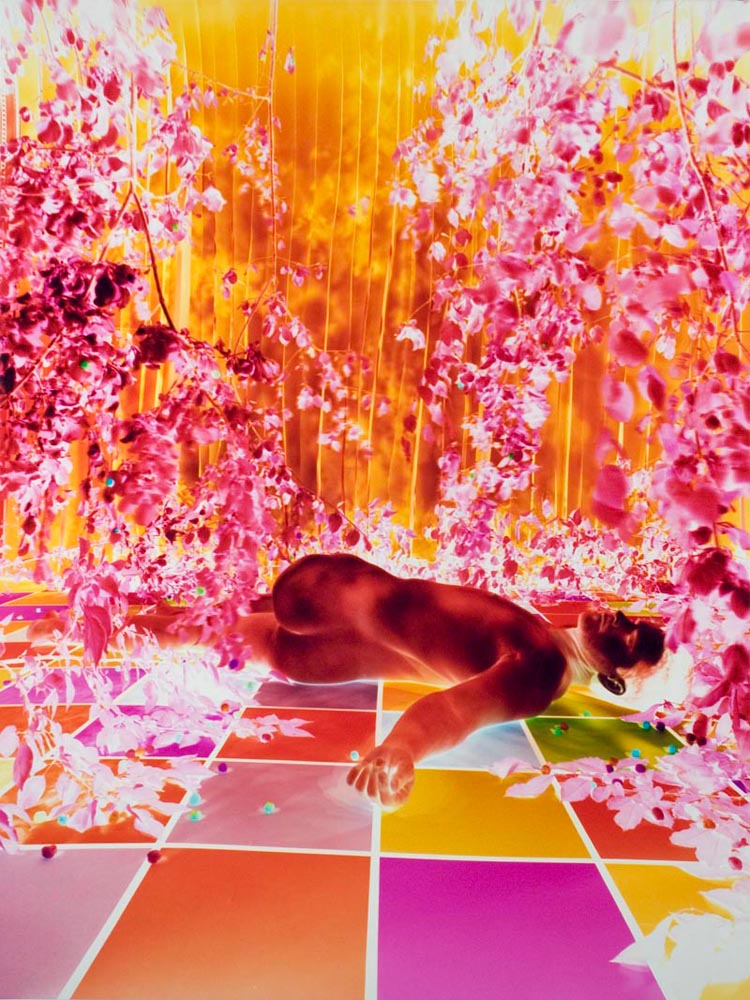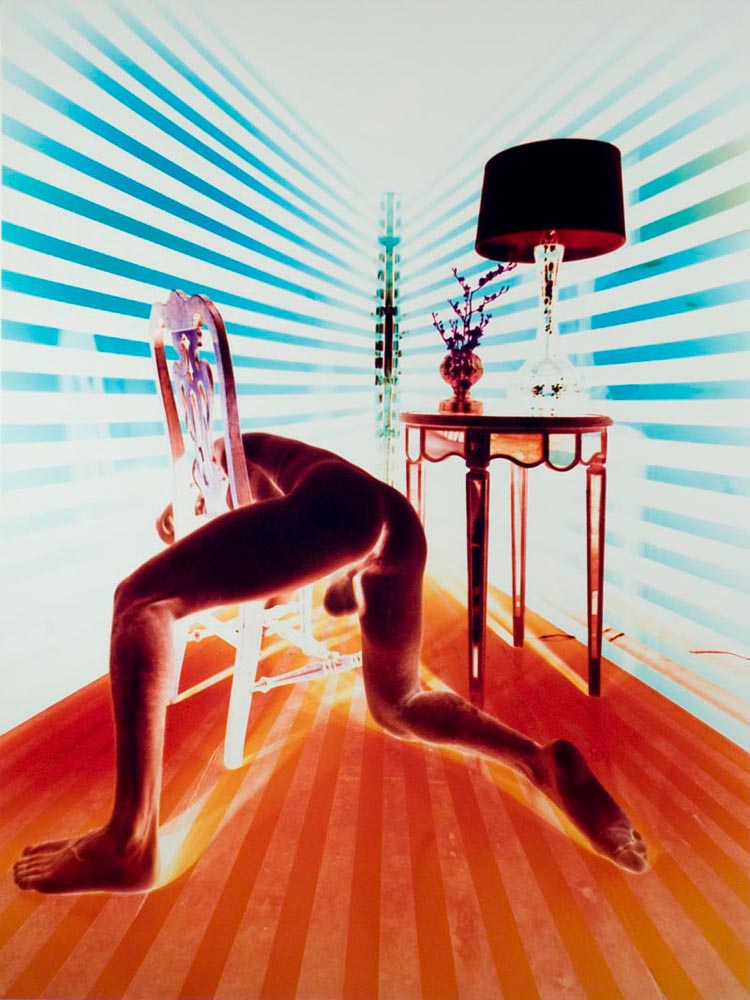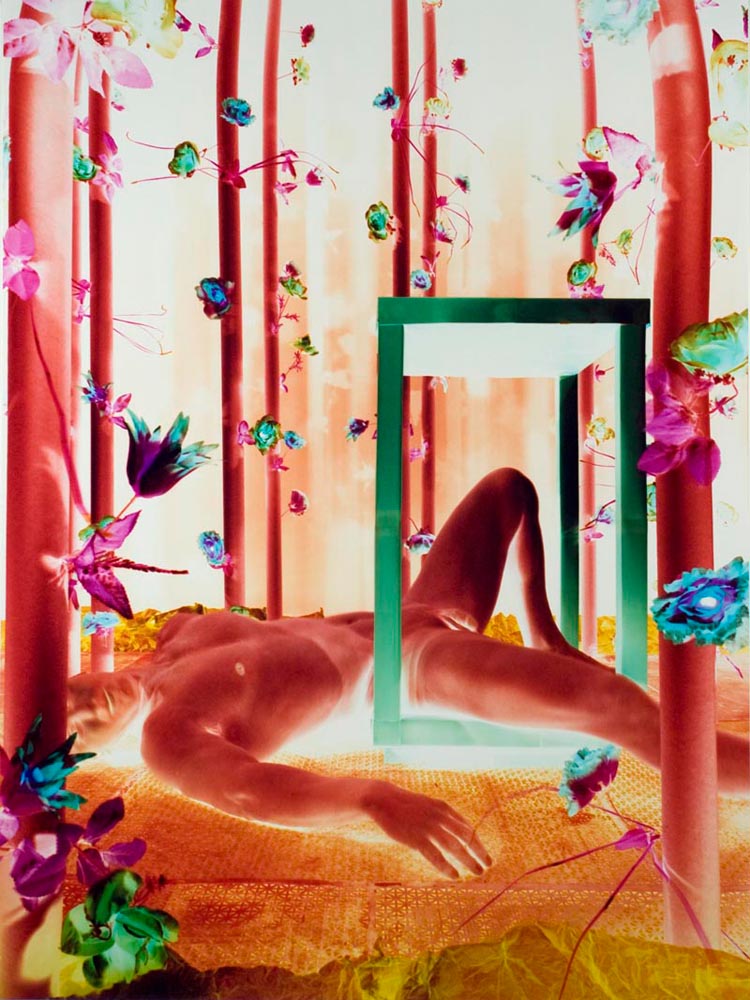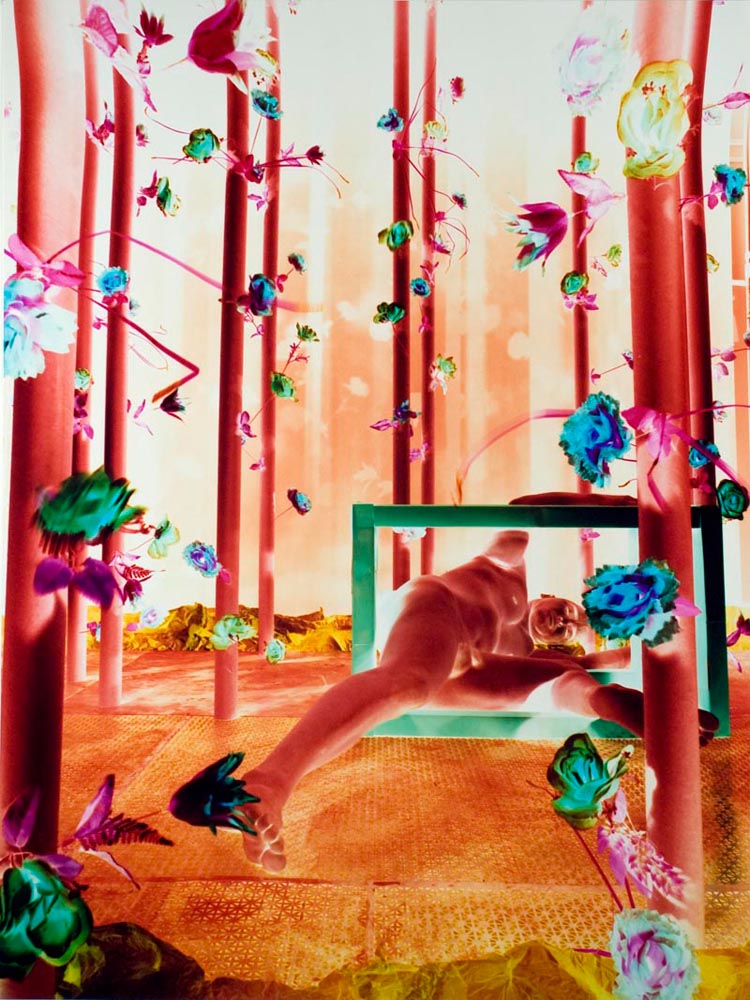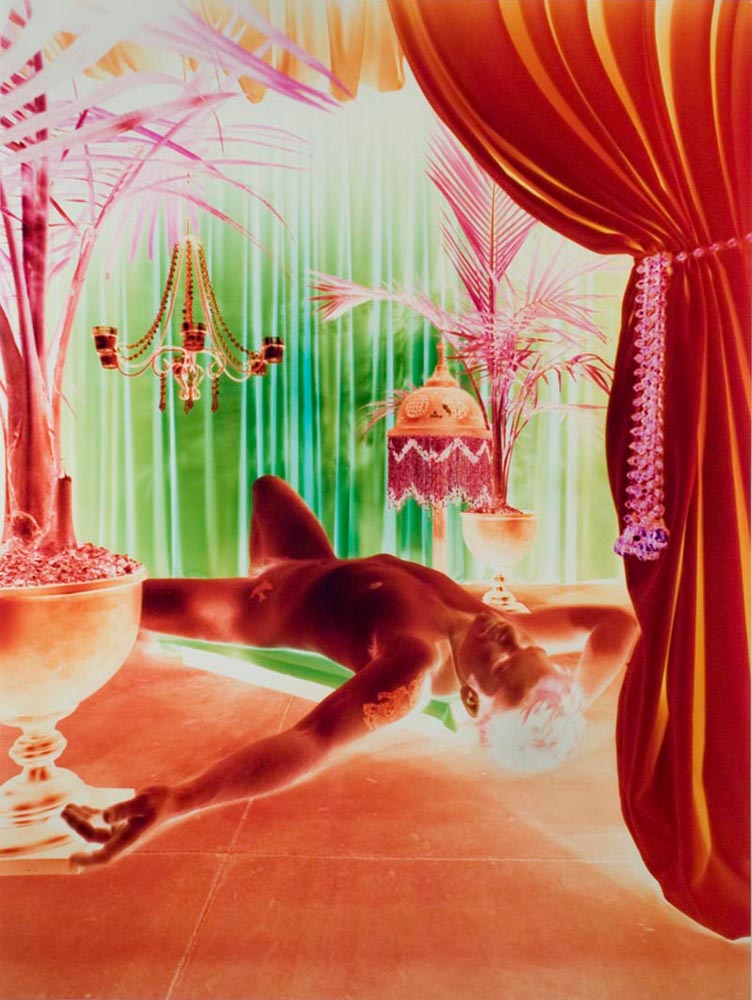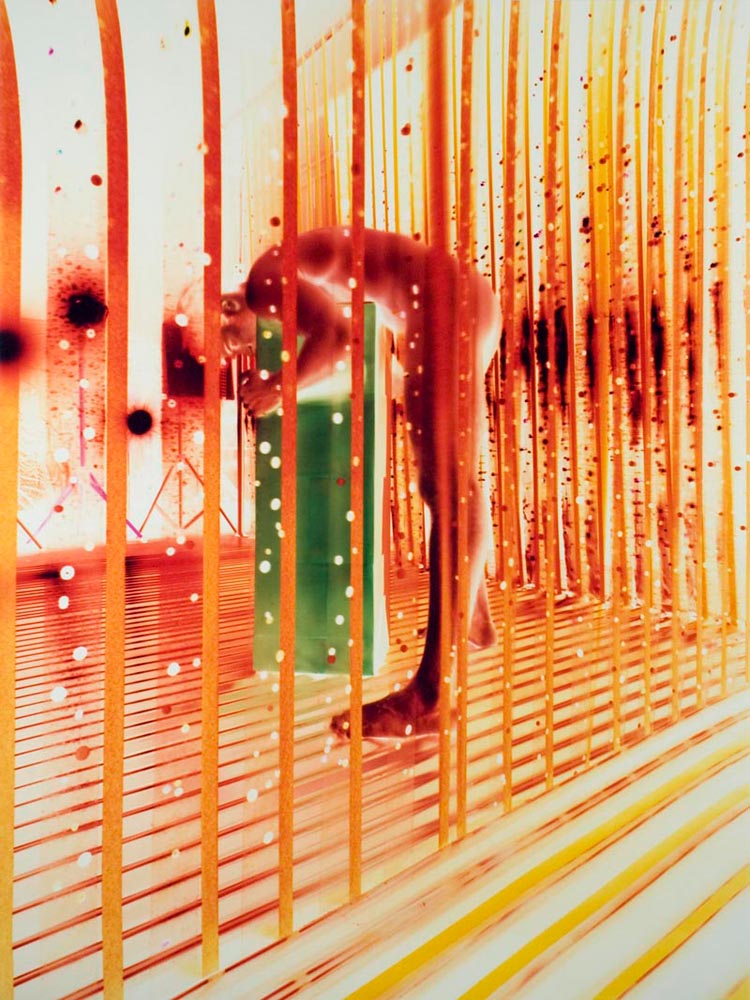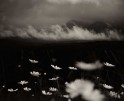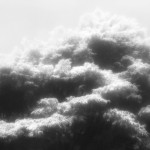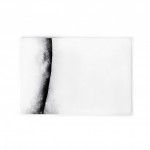Robert Calafiore: The States Project: Connecticut
I first met the talented photographer Robert Calafiore at the Center of Fine Art Photography’s CENTER Forward Exhibition. C4FAP Director Hamidah Glasgow and I selected his work for the show and seeing it in person, I was stunned by it’s beauty and presence — Robert’s large scale one-of-a-kind chromogenic prints, of mid-century modern glass objects, took over the gallery, not unlike a massive stained glass window. His work may be a capture of glass, but the photographs are transformational, stained with rich hues and presenting still lifes in a whole new incarnation.
I was also impressed by the artist behind the work, Robert was intelligent, gracious, open, and a delight. His work has garnered a lot of attention in the past months, with solos shows on both coasts, most recently at ClampArt in New York, and his work is soon to be featured at AIPAD. I am excited to have Robert as out Connecticut States Project Editor and an interview with Robert follows.
Robert was born in New Britain, Connecticut to Italian immigrants. Both his early childhood and young adult experiences have played a significant role in shaping his interests and practice. Raised in a traditional Roman Catholic home, and part of a large extended family, the religious influence and the strong ties to traditions and work ethic, contributed in molding the way he relates to the world. He was the first to attend college, noting he is a first-generation American. After attending art school for both BFA and MFA degrees, Calafiore has focused on his artistic practice while administrating, teaching and promoting the fine arts, internally and externally from a university staff and faculty position.
He received his MFA in Photography from the State University of New York at Buffalo and his BFA in Photography from Hartford Art School. Currently he lives and works in West Hartford, Connecticut, exhibiting his work nationally and internationally. Calafiore recently was awarded a Connecticut Artist Fellowship Grant for 2018, featured in a solo booth at PhotoFairs San Francisco by Gallery 1/1 from Seattle, named the Second Sight Award artist speaker for Medium Festival of Photography in October 2018, and is newly represented by ClampArt, New York City with his first solo show just closed on March 24. Find recent reviews and articles about his work in Photograph Magazine, Diffusion Annual IX, and Collector Daily.

Robert Calafiore employs a hand-built pinhole camera to create large scale one-of-a-kind c-prints. The subject matter, currently either select pieces from a family collection of ordinary glassware or the nude male figure, is placed within a larger construction, a constructed stage set. It is then transformed by the unique recording characteristics of the camera’s wide angle, the extended exposure, and the light sensitive paper’s recording abilities. Calafiore manipulates the still life to control the results; altering the saturation, color, density and translucency of specific areas. His interest in process, traditional materials, and the reaction between light and chemistry, as well as the personal and universal stories told through every day objects and intimate relationships, drives the work in his studio practice. Elevating the ordinary to the extraordinary…the every day to a magical place…the primary motivator. No digital tools are ever used.
Reflecting on the endless flood and speed of changing technology, Calafiore steps back and invests in prolonged experimentation, investigation and hands-on making that begin to speak to a change in how we use our bodies in today’s digital world. Noting the change in the physical dexterity of younger generations and in the way that technology has altered the way we see and experience the physical world has been a fascinating influence on his studio practice. The manner in which we interpret and react to the world around us has shifted. His work is about a pause, a break in the pace and a longer look into, through and across our everyday lives. A merging of passions; one for his muses, (both the glassware that holds so much of his family history and the relationships which energize him) and the observation of a dramatically new understanding of what it means to be human going forward.
Let’s start at the beginning…tell us about your growing up and how you came to photography?
I love this question. I see very clearly now, what took me years to first understand. Many parts of that “growing up” have had significant and direct impact on my work. I was raised by parents who essentially had two families. My two elder brothers on one end, and my sister and I on the other end of a 20 year span. They came to the United States from Sicily in the 1940’s at a very young age. My mom was 17 and my father 23. They are the face of a classic immigrant story. Arriving with nearly nothing, despite the difficulties, they took advantage of the opportunities to work hard and build new lives. My two brothers experienced a time of greater struggle as my parents got on their feet, learned the language, found work, and began building a home and family. By the time my sister and I came along, life for everyone was a bit more routine. My parents worked blue collar jobs all their lives and raised us to believe in working as hard as they did, but also to take advantage of schooling and study available to us, unlike them. In the end, I was the first to go to college. A first generation American child at University. And what did I decide to major in? Art! No one in the family could comprehend what that meant, and in the beginning I don’t think I did either. What I did know was that during my four years in a Catholic college prep high school, I found my closest friends and allies in the art room and most importantly my art teacher. She taught me that I could see differently than others and that I should value that difference and every other difference about myself. Her guidance, kindness, and love influenced my decision as much as the education I received from her about art. It was her who pushed me to pursue the arts and photography as a means of expression and somehow finding a place for myself in the world.
What is it like to be a photographer in Connecticut? Does the landscape or weather connect image makers?
There is a remarkably engaged and wonderful photo community here. Between the wonderful institutions of higher education, like Yale University, Wesleyan College, and my own workplace, Hartford Art School, as well as the museums and art & culture centers like the Wadsworth Atheneum, New Britain Museum of American Art, the Aldrich Museum, Five Points Gallery and Launchpad, CT Office of the Arts and Real Art Ways, there is great support for the arts in our state. Connecticut is a small state, making it easy to take advantage of all that goes on from one end to the other. Meeting my peers and networking has been invaluable. Our community is welcoming, open and engaged, creating the perfect environment for connecting to each other. I really have to add that this spirit of generosity between artists was greatly reinforced by my encounter with you and Hamidah Glasgow in Fort Collins, CO one fateful summer.
How did you find the artist’s you are featuring this week?
All of them are educators. Some have been colleagues, some mentors, and others I have met along the way through my deep involvement in higher education. A few I have known for many, many years and some are new to me. I have great admiration for each one.
Is there a Connecticut photography community?
Above I mentioned some specific places in the state that support the arts in general. Each of them invests in the photographic arts as a significant part of their programs. We are fortunate to have world class cultural institutions that bring us together for diverse experiences and perspectives to consider. It has been such a pleasure to come to know so many wonderful makers in this state. It is through them and others more far afoot like you, that I have been able to grow as a thinker and become a stronger more interesting artist.
Congrats on all your recent successes and exhibition at ClampArt in NYC. Your work is so unique–as you state on your website: “Robert Calafiore employs a hand-built pinhole camera to create large scale one-of-a-kind c-prints. The subject matter currently, a collection of ordinary glassware, is assembled by stacking, shelving and balancing pieces into a single tableau within a larger construction. It is then transformed by the unique recording characteristics of the camera’s wide angle, the extended exposure, and the light sensitive paper’s recording abilities.” How did you come to creating work in this way?
Thank you so much. I am incredibly fortunate to have found support from many across the field. I can not give thanks enough, nor emphasize enough, how important these people have been to me and the direction of my career. I won’t name them all here…but they know who they are.
About fifteen years ago, I began thinking more about the change I was witnessing in my students dexterity. In other words, it became apparent to me that the relationship to our physical world was no longer the same as I had experienced growing up. The shift in understanding how to interact with the world was resulting in a significant difference in basic skills. Examples include handling a photograph, holding a camera, using materials and tools as simple as cutting with a utility knife, measuring with a ruler, assembling parts, and having varying sensitivity to wildly different objects, to name just a few. It became very evident in making pinhole cameras in my experimental photo courses that something was not the same. There seemed to be an increasing difficulty in making a light tight box. The corners weren’t tight, there were no straight lines, and the lids either were too big or too small. What was once a simple project had become a grueling task. Of course, there is now much written about how our “screen life” is changing personal interactions, human relationships and much more. I decided to take my interest in this observation and bring it together with a passion for a large collection of family glassware I have been hoarding for years. It was time for me to set out on a project that would speak directly about my family history through this collection and blend it with my intrigue regarding what it means to be a real person in a real world gone digital. Everything from our smartphones and augmented realities, to complex artificial intelligence are dramatically altering our relationship to our physical world. It’s fascinating. Working in the studio with large handmade pinhole cameras and in the darkroom with large analog materials is very labor intensive. The still life set ups and stage sets are elaborate and time consuming. The long exposures and manipulation that occur are intense and physically draining. I love all of that process and hands on involvement. That was the spark at the beginning of this extended body of work about nine to ten years ago,
We are also featuring some of your figurative work today. Do you approach these images differently?
I began the figurative work long before the still life series. I cut me teeth, so to speak, on the large pinhole cameras (40″ x 30″ for this series), the color papers reaction to direct exposure in the camera, the long exposure requirements and the manipulation necessary to make it all work. These were very difficult to make, primarily because the model had to hold still for 20-30 minutes of exposure. The poses are awkward and hard to hold and the lights are hot and bright. The sets take days to build and getting a great print required 10, 12 maybe 15 takes. It was typically a 3-4 day shoot to get one image that would satisfy what I had imagined. I must admit, I am not sure what my overall plan was but when I work with a model, it’s always about a relationship between the figure and it’s environment. These are over the top, luscious, decadent, and indulgent images that are influenced by art history, mythology, religion, and my personal, sometimes intimate experiences with other people.
What are your thoughts about seeing the world in negative?
This is something I have thought about a great deal. From the start I was enthralled by the pinhole cameras unique viewpoint and the color papers recording capacity. I recall exactly what I felt like when the first large print appeared out of the chemistry. There was something magical. I was captivated. The inverted image was like seeing something I wasn’t supposed to see. Something not meant for human eyes. Something I couldn’t understand yet. It was about not only seeing through and into something, but across something in a way which otherwise could not be done. It’s otherworldly. It transforms the ordinary to the extraordinary…a place I have always longed to see but can’t. It keeps me wanting.
What’s next?
This summer I will venture back into the world of figurative work. With more technical knowledge and a more specific purpose, I will return to building stage sets and employing the nude male model as the main subject. Our current political and social climate has given me more purpose for this work. There is so much intolerance and hate presented to us every day that the kindness and love gets buried. I hear my high school teacher loud and clear. Your differences make you who you are. Embrace them. Celebrate them. And I plan to do just that…intense, provocative, real, and passionate.
And finally describe your perfect day…
Hmm. I would have to say it starts with a great cup of coffee and a big breakfast! If I could fit studio time, teaching time, family, friends, and partner time, all into each day…it would be one perfect day every time. Of course, that doesn’t happen so I’m thrilled if every day can involve a little bit of artwork and one of those other things.
Posts on Lenscratch may not be reproduced without the permission of the Lenscratch staff and the photographer.
Recommended
-
Earth Month: Photographers on Photographers, Dennis DeHart in conversation with Laura PlagemanApril 16th, 2024
-
Luther Price: New Utopia and Light Fracture Presented by VSW PressApril 7th, 2024
-
Artists of Türkiye: Eren SulamaciMarch 27th, 2024
-
European Week: Sayuri IchidaMarch 8th, 2024
-
European Week: Jaume LlorensMarch 7th, 2024













